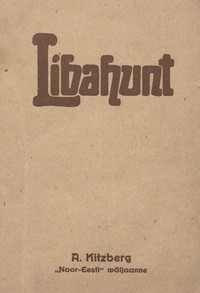| Summary |
"Libahunt: Draama wiies vaatuses" by August Kitzberg is a drama written in the early 20th century. This play, set in a rural Estonian village during the early 19th century under the oppressive bondage system, explores the themes of human nature, the supernatural, and societal prejudice. The story features a range of characters, including Margus, a young man caught in the tensions of love and societal expectations, and his relationship with Tiina, who is central to the unfolding drama amidst whispers of witchcraft and transformation. At the start of the play, the bleak and tensed atmosphere is established in the setting of a humble cottage where the Tammeru family gathers on a cold winter evening. The interactions among the family members—specifically, the mother and children as they navigate their studies, fears of wolves, and superstitions surrounding a “libahunt” (wolf-man)—set the tone of dread and concern for their safety. The characters engage in discussions that highlight the societal fears of witchcraft and transformation, particularly as a mysterious child, presumed to be linked to a witch, appears at their door, fostering a suspenseful environment that hints at deeper conflicts to come. The opening effectively lays the groundwork for a narrative that will delve into themes of identity, the clash between tradition and change, and the quest for belonging against a backdrop of folklore and superstition. (This is an automatically generated summary.)
|

